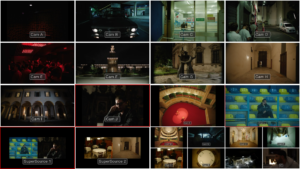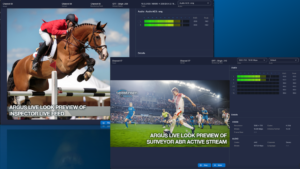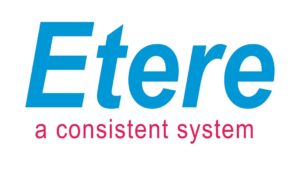Veset – Why cloud playout is fast becoming critical for live broadcasting
Cloud playout is nothing new – many broadcasters and service providers have already switched to the cloud for playout of content. A few media organizations were ahead of the game and switched playout to the cloud as long ago as 2016 (Discovery for one), and many others have since followed in their footsteps. Having said that, there’s still plenty of media companies and broadcasters who still operate playout from on-premises infrastructure. And there are also those that have chosen to go with a hybrid approach using cloud playout for some content delivery such as FAST while retaining traditional playout for content such as live news and sports broadcasting.
Although cloud playout is being used with high levels of success by some broadcasters, there still seems to be a reluctance to fully commit to cloud playout for live programming. There’s a lingering fear that it doesn’t yet have the capabilities needed to handle the complex challenges of live broadcasting, and as a result, many broadcasters still rely on on-premise SDI technology and dedicated network infrastructure. It’s true that early cloud playout solutions may have lacked the necessary functionality and technical capabilities for live content, but that is no longer the case.
Given that cloud playout has the potential to bring down operational costs, deliver efficiency savings, and provide flexibility and scalability that traditional on-prem playout struggles to match, will those media companies who choose to carry on with the status quo with their live programming soon find themselves left behind? Are we heading into a period when cloud playout will become critical for all broadcasters, regardless of whether it’s pre-recorded or live content?
Live broadcasting is not without its challenges
Delivering live content presents a unique set of challenges that require advanced technical capabilities for seamless playout. From the intricate timing of live sports events to the rapid delivery of breaking news, broadcasters are under immense pressure to deliver high-quality content in real-time, and in today’s competitive landscape, there’s no room for error.
The kinds of challenges that broadcasters face when dealing with live broadcasts will depend in part on the nature of the live event, which can be fully scheduled, partially scheduled or fully manual. Channels may well be a mix of pre-recorded and live content, so broadcasters need the ability to easily manage the change from one type of input to the other.
There is a high level of unpredictability that comes with broadcasting live events, so broadcasters need to be confident that they can manage these issues as and when they happen. There could be technical issues ranging from problems with quality of the video or audio feed, to complete loss of connection. And let’s not forget that live events often do not follow the schedule; they can and do start late, and may well overrun, which adds to the unpredictability.
Ad breaks too may also need to be factored in and inserted into the live signal. The way that ad breaks are triggered will depend largely on whether they are fully scheduled, such as for a live studio programme, or unscheduled, for example during a live sports event, where a manual break may need to be inserted at an opportune moment.
To manage these challenges, broadcasters need to be able to easily manage and switch between multiple live feeds and pre-recorded content. Playout systems must also allow media operators to start and finish live events manually by overriding the scheduled timeline and enable linear programme schedules to be adjusted on the fly. Managing all the potential challenges effectively is obviously critical, otherwise the viewer experience is going to be negatively impacted.
Managing latency
Another issue that tends to attract a lot of attention when considering the ability of cloud playout for live content is latency. It’s easy to see why this is a concern for broadcasters because live means live: everyone expects to see the content as near to real time as possible.
While on-prem SDI-based workflows typically exhibit negligible or non-existent latency, a system transmitting compressed video from the studio to cloud playout is likely to experience a certain level of latency. This can however be managed and reduced to an acceptable level by using the right transport protocols, such as SRT, Zixi and RIST, and by using the right method for routing and switching to and from live signals, feeds, and ads, whether that be using SCTE-35 triggers or the use of virtual REST API web-based requests. Broadcasters can also leverage advanced cloud network technology such as AWS CDI to transport high-quality uncompressed video in the cloud with low network latency.
The case for cloud playout adoption

Just as cloud-based tools are continually improving for all parts of the content supply chain, cloud playout too is also constantly evolving, and is now able to meet the demands of live broadcasting.
Cloud playout provides broadcasters with the flexibility needed to manage the unpredictability of live events, and additionally, it provides scalability that on-premises solutions cannot match. With the added ability to quickly and easily launch (and close) new channels in response to changing circumstances, cloud playout allows broadcasters to work in a much more responsive and flexible way; even ads can easily be added using in-video ad insertion methods.
Cloud playout not only addresses the technical challenges associated with live broadcasting but also offers a level of agility and scalability that is indispensable in today’s fast moving and complex media landscape. It eliminates the need for significant upfront investments in hardware and infrastructure, and broadcasters can also leverage the cloud’s pay-as-you-go model, optimizing costs and reallocating resources as needed.
Although traditional on-premises playout systems are trusted for their reliability, they lack the flexibility needed to adapt quickly to changing circumstances, putting broadcasters at a disadvantage in today’s fast-paced media landscape. To stay competitive and future-ready, broadcasters need to make the leap and embrace cloud playout not just for pre-recorded content, but also for live programming.









